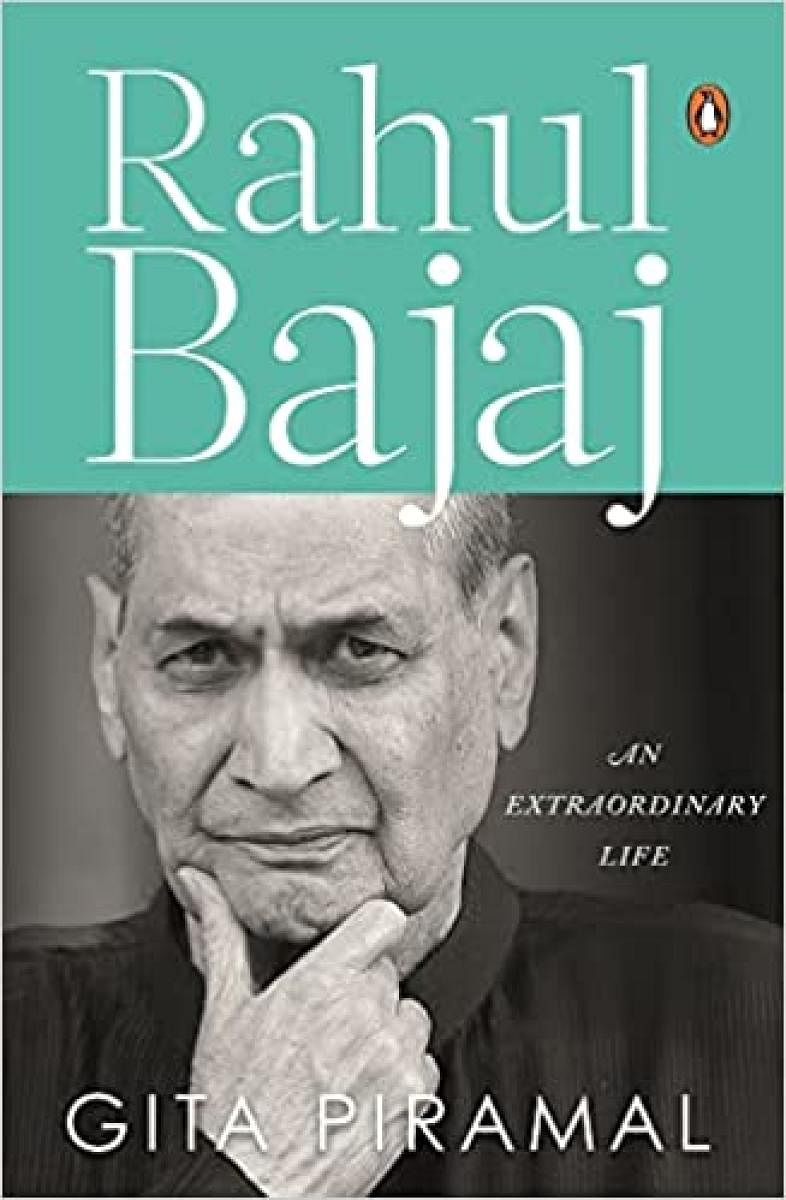
In this biography, Gita Piramal — who has proved her mettle in telling India’s business stories on numerous occasions in her previous works — yet again takes us through the journey of one of the most influential entrepreneurs who played an instrumental role in forging not just an Indian but a global automobile company.
One might get initially miffed that Piramal begins the biography of an Indian automobile tycoon with anecdotes about India’s independence struggle but as one reads, one gets convinced about the need to do so. The writer, with her non-linear storytelling that goes back and forth across several timelines, touches on various themes including war, family, patriarchy, business, regulatory hurdles and politics. And does a good job of it too.
The fact that Rahul Bajaj’s mother, Savitri, was imprisoned during the Quit India movement when Bajaj was just four and the frequent interactions the Bajajs had with the architects of independent India, including Jawaharlal Nehru and the Gandhis, make it evidently clear that Bajaj grew up in a family that had its roots tied to the independence movement in the country.
While the first few chapters of the book move chronologically, setting the foundation for understanding the familial background and setting Bajaj came from, it does break the timeline every once in a while, only to fill the readers in with minutiae from Bajaj’s childhood — a welcome break from heavier chapters.
Anecdotes around Bajaj’s academic excellence, life at the Harvard Business School and excerpts from the testimonies of many of Bajaj’s contemporaries, ranging from business tycoon Ratan Tata to Pakistan’s ex-premier Zulfikar Ali Bhutto, brew a perfect recipe in the readers’ minds about the persona of Rahul Bajaj.
The writer gives multiple accounts of Bajaj’s father Kamalnayan’s unending rendezvous with the politicians and policymakers of those times to throw light on the challenges and complications a budding industry had to face in pre-liberalised India.
Piramal pertinently embeds the many political landmarks — Indira Gandhi’s regime, the Emergency and the end of the licence Raj with the coming of economic reforms in the 1990s — to give a sense of how the evolution of India’s automobile industry cannot be understood in isolation without looking at the political happenings of that time.
Through many such anecdotes, the writer focuses on how the Bajaj Group and its many companies became a household name by the turn of the century.
“...the outcome of Bajaj’s strategy can be gauged from the fact that barring Bajaj Auto, not a single scooter brand of the 1960s ad 1970s survived the onslaught of the Indo-Japanese ventures in the 1980s,” the writer summarises after one such anecdote about Bajaj’s ‘low-cost top quality’ strategy.
Piramal writes in depth about the success Bajaj Motors tasted amid times when Indian companies were still facing restrictive policies in terms of tight regulations on imports and production licences that were hard to obtain.
The fact that Bajaj’s famous Chetak scooter became a symbol of mobility for the Indian middle class is a testimony to the kind of brand image Bajaj Auto forged in the minds of its consumers. As a social commentator is aptly quoted talking about the value of the Chetak scooter in an Indian household, “With a wife perched uncomfortably at the back, Gudiya squeezed between the two and Cheeku standing up front… it had space to squeeze in a full family, a place to carry vegetables, a dickey to store the sundry needs of the family…”
Beyond business
Piramal doesn’t stop at Bajaj’s life as a revolutionary tycoon in India’s automobile industry but also writes extensively about the impact he had on Indian politics during his stint as the president of the Confederation of Indian Industry and as the Chairman of the International Business Council of World Economic Forum.
The book documents at length Bajaj’s criticism of various policies, both in business and political spaces. One of the instances involved Bajaj writing a “forceful and thought-provoking” article condemning the then-Gujarat government for the killings in the 2002 Gujarat riots.
Be it the Shah Commission Report on the excesses of the Emergency or the recommendations for the gradual opening up of India’s economy during the 1990s, the book showcases how either Bajaj or his extended family members have had a significant role to play in the shaping of the Indian industry as a whole and not merely that of the automobile.
The story takes us through Bajaj’s days from being a young, playful yet caring kid to an astute businessman for whom ethics and transparency were of utmost importance. While the writer, on multiple occasions, seems to have repeated some of the happenings, keeping in mind the highly non-linear nature of the book, this is, in a way, helpful for the reader to connect the dots.